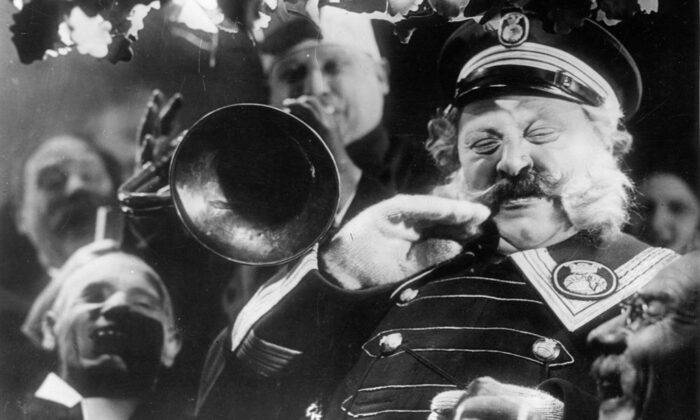The Last Laugh (1924) brought together the greatest German filmmakers of different fields from the golden age of silent film. Working with director F.W Murnau were scripwriter Carl Mayer, cameraman Karl Freund, set designers Robert Herlth and Walter Röhrig and actor Emil Jannings.
In The Last Laugh, the greatest scenarist of the 1920’s was able to realize his visions. Almost literally, for the film was the culmination of the moving, subjective camera, showing events from the main character’s viewpoint. This technique is not an end in itself but serves the theme of humiliation: the old doorman of a big hotel is transferred to the men’s room. Criticism is aimed at the petite bourgeoise, who imitate even the most intimate gestures from their superiors and feel that the meaning of life is lost the moment their uniform is taken away from them; instead of comprehending their proletarised position, they day-deream of power with disregard for the consequences.
The Last Laugh is one of the first films where a member of the bourgeoisie was shown as anonymous (similar to Kafka’s Josef K.), powerless at the mercy of intimidating, incomprehensible surroundings. The fantastically interpreted gestures (sometimes arrogant, sometimes humble) of Emil Jannings grow into a strictly patterned social tragedy. The fairytale-like and absurd end of the film gives Jannings the chance to act the partt of a user of service professions in all his greed and artificial sophistication; this changing of parts is ingenious humiliation dramaturgy and the illustration of it.
Peter von Bagh
